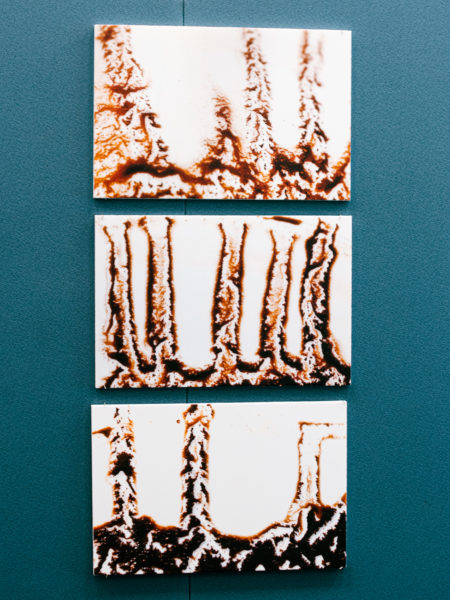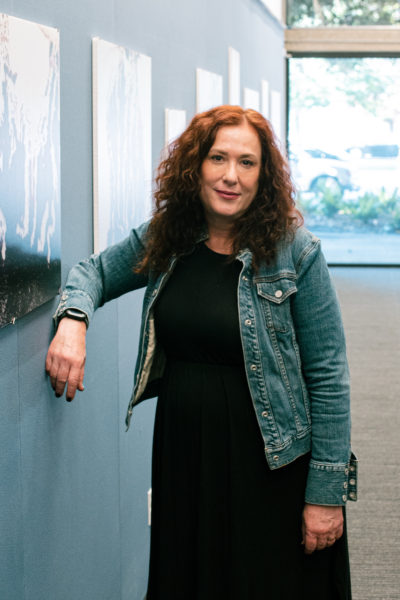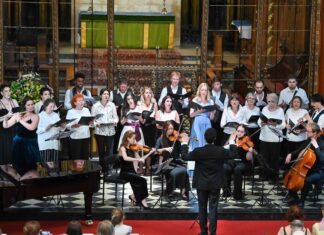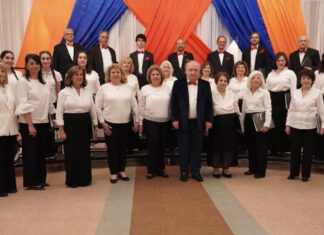LOS ANGELES — The sounds and smells of Armenian coffee are part and parcel of gatherings at traditional households. The long introductions reverberate as people fill up your home. After introductions the question of who wants coffee is posed, and the host, or the person who makes it the best, proceeds to the kitchen and sets up each cup on a tray. Conversation is often distracting, and can cause the coffee to boil over the jezve — spilling on the flames and engulfing the room with the smell of burnt coffee.
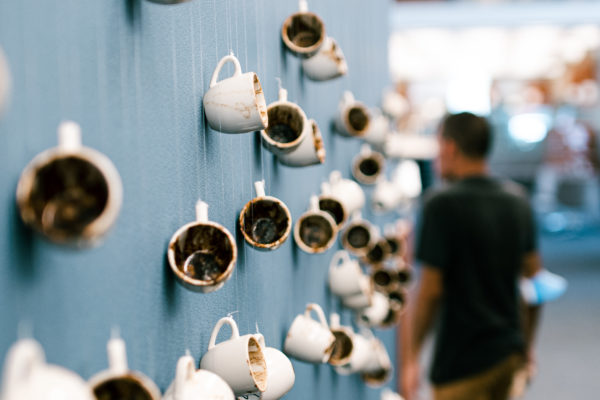
Once ready, the coffee is eagerly drunk as one topic of conversation leads to another, until everybody’s cups are empty and turned over on their saucers. Next comes the question: Who is going to read the cup?
As Armenians know, the coffee grounds in the traditional coffee do not dissolve and once the cup with the dregs is turned over, patterns form which can be interpreted by cup readers.
Artist Helena Grigorian was fascinated by this process and as a result she created “My Life From the Grounds Up,” a display about Armenian coffee and the ritual of tasseography (the divination method that interprets patterns in coffee grounds, or tea leaves) at the Glendale Library, Arts and Culture. The display consists of 300 coffee cups that Grigorian hand painted with real coffee grounds, clear glue, polyurethane and other materials, as well as large photographs of coffee grounds from Grigorian’s personal cups.
Grigorian recalls being captivated by the readings when she observed the tradition with her mother and her friends.
“I couldn’t wait till I got older to have my cup read because it was something that would bring all the women together,” Grigorian said.




